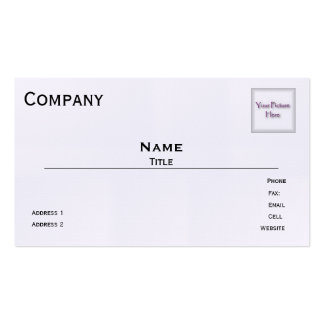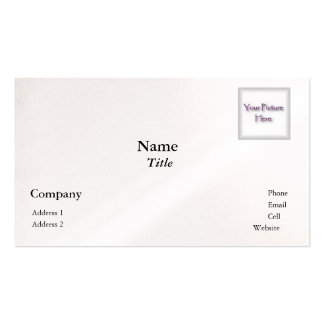Don Crowther thinks you should put your picture on your business card. Not only that, but he wants you to include a mini-résumé, your Twitter handle and some sort of special offer that entices each recipient to get in touch.
Crowther, an online marketing consultant in Racine, Wis., has developed some strong opinions about those two-by-three-and-a-half-inch pieces of paper that are an essential networking tool. “To me, a business card is a small brochure,” he says. He carries nine different versions of his own card. “It’s as much a marketing piece as your website, your brochure or anything else that you do.” Several of his cards include a photograph of himself taken from above, and one has an offer on the back of 20 free tips on how to use social media to build a business, if you get in touch. He says that 20% of the people who get that card send him an e-mail.
At first, Crowther’s advice struck me as hokey bordering on overkill. But I consulted with two of my best career advice sources, and they thought he had some good ideas, though his tips may be most useful for people who work for themselves or run small businesses.
Roy Cohen, a career counselor, executive coach and author of The Wall Street Professional’s Survival Guide, says, “Your business card should use the prevailing standard for your profession and your community.” He adds that “for the audience Crowther is targeting, his advice may make sense.”
Why include a picture? “You go to a convention, and you come home with 55 cards in your pocket,” Crowther says. If one or two cards have photos, you’ll remember those people. That’s the point of most of Crowther’s tips, to make your card stand out in the crowd. For that reason, he likes unconventional sizes and formats. He also applauds the use of humor and cleverness. One of his favorites is the card of a freelance Santa Claus who makes appearances at parties and events. The card is a mock driver’s license for Santa with the notation “authorized to drive with up to 12 reindeer.”
“There are pros and cons to including a picture,” says Connie Thanasoulis-Cerrachio, a career services consultant at Vault.com. “Networking is all about remembering the person and continuing the relationship.” Although a picture might seem silly, she adds, it will certainly jog a recipient’s memory. Which is why many realtors include their photos as a matter of course. “The pros probably outweigh the cons,” she concedes.
Thanasoulis-Cerrachio doesn’t like odd-size business cards. For those who save cards, weird shapes cause problems. “I have a plastic sleeve that holds 10 business cards,” she says, and she cuts oversize cards to make them fit. Cohen sees a place for both conventional and oversize cards, especially for people in creative fields. “If you’re in the luxury goods business,” he remarks, “you want a business card with some flair.”
Crowther cautions you to leave unembossed white space on your card, so that recipients will have a place to make notes. Especially if your card doesn’t have a photo, a person who gets it is likely to want to jot down a couple of reminders about you.
For most of us who work for large or established companies, our business cards are predetermined. My Forbes card simply has the Forbes logo, my senior editor title, my business street address, phone and fax number and my e-mail address. Nothing fancy. Crowther thinks I should have another set of personal cards printed up for networking purposes, and include my photo. Thanasoulis-Cerrachio and Cohen disagree. “The idea of having a separate business card could be considered dangerous or damaging,” says Cohen.
“If your main job is at Forbes,” Thanasoulis-Cerrachio agrees, “that’s what your card should say.”
Job seekers should always carry cards, and so should students, Crowther, Cohen and Thanasoulis-Cerrachio all say. The three agree that a card should include more than just your contact information. Thanasoulis-Cerrachio, who spent 25 years running college recruiting for Wall Street firms like Merrill Lynch and Citicorp, suggests that students include their school logo along with their name and contact information. Cohen recommends including some text describing your area of expertise. For example, his card says, “Career Management, Executive Coaching, Leadership Development.”
Whenever you give out your card, the career pros all agree, you should always ask for one in return. Then be sure to take the next step: Follow up with a note. Cohen recommends immediately connecting with the person through LinkedIn. Of course, at that point you’ll see one another’s pictures, a virtual way of putting into practice Don Crowther’s No. 1 piece of advice, that you share your photograph.



No comments:
Post a Comment